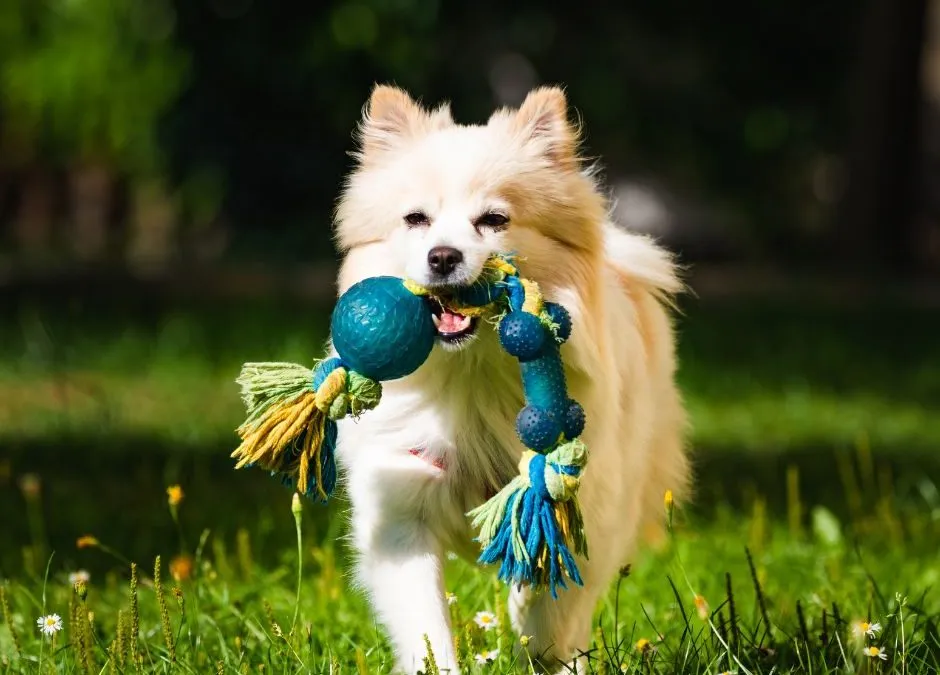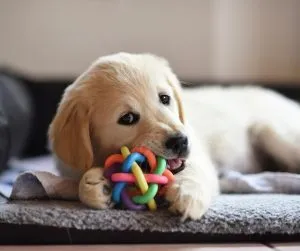There’s a special joy in watching a small dog enthusiastically engage with a toy, their tiny tail wagging with sheer delight. For owners of smaller breeds, these moments of play are not just heartwarming; they are crucial for mental stimulation, dental health, and overall well-being. However, selecting the right chew toys for petite pups comes with its own unique set of considerations to ensure their safety and enjoyment. We understand the paramount importance of choosing toys that are not only fun but also free from hazards, preventing potential choking or ingestion of harmful materials. This guide is dedicated to helping you navigate the world of Safe Chew Toys For Small Dogs, ensuring your furry companion’s playtime is both joyful and secure. To learn more about robust options, consider exploring durable chew toys for small dogs.
Why Small Dogs Need Special Chew Toy Considerations
While all dogs benefit from appropriate toys, small dogs present specific challenges when it comes to chew toy selection. Their smaller mouths and delicate teeth mean that toys designed for larger breeds can quickly become choking hazards or cause dental damage. A toy that is too large might be ignored, while one that is too small could be swallowed whole or break into dangerous pieces. Understanding these distinctions is key to providing a safe and enriching play experience. It’s not just about size; it’s also about durability, material, and how the toy interacts with their unique chewing style.
Key Factors for Identifying Safe Chew Toys for Small Dogs
Choosing the ideal chew toy for your small dog involves a careful assessment of several factors beyond just immediate appeal. Looks can be deceiving, and what seems entertaining might not always be safe. By focusing on material, manufacturing, size, and durability, you can make informed decisions that prioritize your small dog’s health and safety.
Safe Materials for Small Dog Chews
The material a chew toy is made from is perhaps the most critical safety factor. Dog toys, unlike human products, are not strictly regulated by the FDA, primarily falling under the Consumer Product Safety Commission only if they pose risks to humans. This means the onus is often on pet owners to be vigilant. Many toys, particularly those made from certain plastics, can contain harmful chemicals that are toxic or even life-threatening when ingested. For small dogs, who might ingest smaller fragments more easily, this risk is amplified.
Look for high-quality materials like Grade A or natural rubber. These options are typically non-toxic, flexible enough to be gentle on teeth, and durable enough to withstand moderate chewing. Natural fibers such as cotton, wool, or hemp can also be good choices for softer chewers, provided they are tightly woven and not easily shredded. Always avoid toys with excessive dyes or strong chemical odors.
 Small dog playing with a small, non-toxic chew toy
Small dog playing with a small, non-toxic chew toy
Reputable Manufacturers and Quality Standards
The integrity of a toy’s manufacturing process is directly linked to its safety. It is crucial to select chew toys from reputable manufacturers known for using non-toxic coatings, safe chemicals, and durable dyes. A good indicator of a brand’s reliability is transparency about their production methods and materials. Checking recall lists, such as the FDA’s animal/veterinary recalls, can also help identify brands that have had product safety issues. While not all recalls directly affect dogs, recurring issues can signal potential manufacturing problems. Prioritize brands recommended by veterinarians and trusted animal care experts who often have insights into the safest options available.
The Right Size: Avoiding Choking Hazards
For small dogs, appropriate toy size is paramount to prevent choking hazards. A toy that is too small can easily be swallowed, obstructing the airway or digestive tract. Conversely, a toy that is too large might discourage play or make it difficult for your dog to comfortably chew. The general rule of thumb is that a chew toy should be too large for your small dog to fit entirely into their mouth. This prevents them from accidentally swallowing it whole.
Be particularly cautious with toys that have small, detachable parts like strings, beads, bells, or plastic eyes, as these can easily come loose and become choking hazards. Even durable toys can wear down over time, creating smaller pieces. Regularly inspect toys for any signs of damage and replace them promptly. When considering the best options for your tiny companion, remember that safety often hinges on size, unlike the broader requirements for best chew toys for medium dogs where size is less of a universal choking concern.
Durability Matters for Tiny Teeth
Small dogs, despite their size, can be surprisingly vigorous chewers. Therefore, durability is a significant factor in selecting safe chew toys. Toys made from fragile materials can quickly break apart, creating sharp edges that might cut your dog’s mouth or small pieces that can be swallowed. Rubber and silicone are excellent material choices for safe, non-toxic dog toys due to their durability and pliability. They are tough enough to withstand chewing but flexible enough not to cause damage to your small dog’s teeth.
A simple “thumbnail test” can help assess a toy’s suitability: if you can make a slight indent in the object with your thumbnail, it’s generally pliable enough for chewing without risking tooth fractures. If your thumbnail bends or cannot make an indent, the toy might be too hard and could lead to dental issues. Always aim for a balance between durability and flexibility to protect your small dog’s dental health.
 Lady holding her dog while choosing safe chew toys and toys
Lady holding her dog while choosing safe chew toys and toys
Recommended Safe Chew Toy Types for Small Dogs
Every small dog has a unique personality and play style. Whether they are an energetic explorer, a cuddle bug, or a clever problem-solver, there’s a safe and engaging toy type out there for them. Understanding these categories can help you choose the most suitable options for your small companion, ensuring both fun and safety.
Chew Toys
Chew toys are indispensable for high-energy small dogs and are excellent for relieving stress, boredom, and even helping to clean their teeth. For safe and healthy options for small breeds, prioritize toys made from sturdy materials such as natural rubber, silicone, or specially formulated nylon. It’s vital that these toys are appropriately sized for their small mouths, preventing accidental swallowing while still providing a satisfying chewing experience. Look for textures that engage their gums and help remove plaque. When seeking toys perfectly suited for relentless chewers among small breeds, a good place to start would be to explore lists like the best small dog toys for chewers.
Interactive and Puzzle Toys
These toys are fantastic for stimulating both the mental and physical health of your small dog. Interactive toys challenge their problem-solving skills, reducing boredom and preventing destructive behaviors that often stem from a lack of mental engagement. Examples include puzzle toys that require manipulation to release treats, or treat-dispensing balls. These toys can keep small dogs occupied for extended periods, providing a healthy outlet for their energy and intelligence.
Fetch and Tug Toys
For active small dogs, fetch and tug toys provide excellent opportunities for exercise and bonding. These toys encourage physical activity, helping your dog burn energy and maintain a healthy weight. Look for durable options like tightly woven rope knots (without small, shreddable fibers), small rubber balls, or flexible flying discs specifically designed for smaller breeds. Always supervise tug-of-war games to ensure your dog doesn’t get too aggressive or accidentally ingest parts of the toy.
Top Picks: Safe Chew Toys Specifically for Small Dogs
As devoted pet owners, we want to provide our small companions with toys that bring them joy without compromising their well-being. Here are a few recommended options known for prioritizing both fun and safety, specifically suitable for small dogs. Remember to always choose the appropriate size variant for your specific breed.
- Kong®-type products: A dog toy best-seller since the 1970s, Kong offers a wide variety of toys made from strong, natural rubber. They come in various sizes, including many perfectly suited for small dogs. Kong toys are widely recommended by veterinarians for their durability and ability to be stuffed with treats, providing extended mental stimulation.
- West Paw Zogoflex® toys: West Paw’s proprietary Zogoflex® material is completely recyclable and free from latex, BPA, and phthalate. These toys are highly durable, gentle on teeth, and many designs are ideal for small mouths. They are also dishwasher-safe, making cleaning a breeze.
- Bully Max Indestructible Ball: This non-toxic, industrial-strength ball is a great, safe, and durable alternative to traditional tennis balls, which can break apart. Made from eco-friendly natural rubber, it’s designed to prevent pieces from breaking off, making it safer for small dogs. It’s also dishwasher-safe for easy maintenance.
- Goughnuts rings or sticks: Made from 100% natural rubber, Goughnuts toys feature a unique “Chew Toy Safety Indicator.” This colored inner layer becomes visible if your dog chews through the outer layer, signaling that it’s time to replace the toy. They offer smaller sizes suitable for little mouths, providing an extra layer of safety.
- Tuffy Toys: For small dogs that prefer softer textures but still need durability, Tuffy Toys offer durable plush and soft dog toys. They are constructed with multiple bonded layers of FDA-approved, non-toxic, food-grade materials, making them more resilient than many other plush options. They are suitable for gentle playing or for small dogs who love to cuddle with their toys. For small dogs who might be unusually vigorous, exploring resources like the best chew toys for aggressive chewers can offer additional robust options.
 Small dog happily playing with a small chew toy
Small dog happily playing with a small chew toy
Maintaining Toy Safety: Tips for Small Dog Owners
Beyond selecting the right toys, maintaining a vigilant approach to your small dog’s playtime is essential. Consistent care and observation ensure that toys remain safe throughout their lifespan.
- Regular Cleaning: Toys can accumulate bacteria, dirt, and grime. Regularly clean your dog’s toys, especially those that come into contact with food or outdoor surfaces. Many rubber and silicone toys are dishwasher-safe, while fabric toys can often be machine washed. If a toy is too dirty to clean effectively, it’s time for a replacement.
- Replacing Damaged Toys: It’s crucial to inspect toys frequently for signs of wear and tear, such as fraying, cracks, or missing pieces. Even the most durable toys will eventually degrade. Promptly remove and discard any damaged toys to prevent injury or choking hazards. A small crack in a hard toy could create a sharp edge, and a torn plush toy could lead to ingested stuffing.
- Rotating Toys: To maintain your small dog’s interest and extend the life of their toys, consider rotating them. Keep a selection of toys available and store the rest, bringing them out periodically. This keeps playtime fresh and exciting and helps you monitor the condition of each toy more closely.
- Supervision During Play: Always supervise your small dog, particularly with new toys or when they are actively chewing. No toy is truly “indestructible,” and vigilance is your best defense against accidents. If you notice your dog’s mouth or gums bleeding during play, switch to a gentler option immediately and consult your veterinarian. Should you also have a larger canine companion, remember that their toys will differ, so ensure you understand the specific needs when looking for cute dog toys for big dogs.
Conclusion
Choosing safe chew toys for small dogs is a critical aspect of responsible pet ownership, directly impacting their health, happiness, and longevity. By understanding the unique needs of smaller breeds and carefully considering material, manufacturing standards, appropriate sizing, and durability, you can provide a stimulating and safe play environment. Remember to prioritize reputable brands, regularly inspect and clean toys, and always supervise playtime. When in doubt about a specific toy or product, never hesitate to consult your veterinarian for expert advice. Your small dog deserves the best, and with careful selection, their playtime can be both endlessly fun and perfectly safe. For more valuable insights into pet care, explore other articles on Dog Care Story.
